The nose consists of the nasal bone, upper alar cartilage, lower alar cartilage, and septal cartilage. A deviated nose occurs when a part of the nose is crooked to one side.
Deviated nose correction is divided into two: axis deviation (external deviation) and septal deviation (internal deviation). Nose deviation can cause functional issues such as breathing problems, chronic daily headaches, and even facial asymmetry. Therefore, deviation correction should consider the functional aspect as well as the aesthetic aspect.
With 23 years of clinical experience in Korea, CDU Korea provides fast recovery without a scars.
Surgery Duration
Approx. 40-60 min
Hospitalization
No
Stitches Removal
After 7 Days
Anesthesia
Local and Sedation
Recovery Period
7 Days
Recommended For

- Deviated nose: The nose deviates to one side.
- Facial asymmetry: The face itself is not symmetrical on both sides.
- Functional issues: There are breathing issues and headaches due to deviation.
- Crooked implant: The implant deviates after rhinoplasty.
Types of Deviation

-
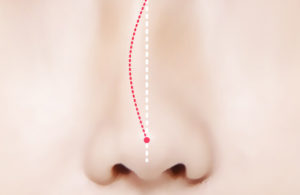
C-Type
The dorsum is crooked to one side. -
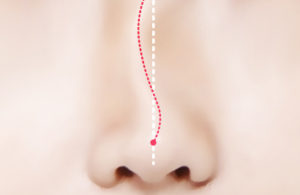
S-Type
The dorsum and the tip are crooked to opposite sides. -
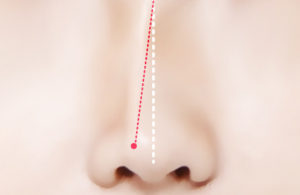
Oblique-Type
The nasal tip is off to one side.
Causes of Breathing Issues Due to a Deviated Nose

Septum deviation
Nasal valve narrowness
When the nasal valve, which controls the air going in and out of the nose, is narrow, breathing can be uncomfortable.
Rhinoplasty
After rhinoplasty, when the supporting structure of the septum becomes weakened or thicker, breathing can be uncomfortable.
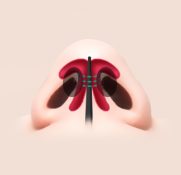
Surgery Methods

Alar sculpturing suture
With the most common method of deviation correction, when the height of the alar cartilage is different, asymmetry can be corrected by realigning the alar cartilage.
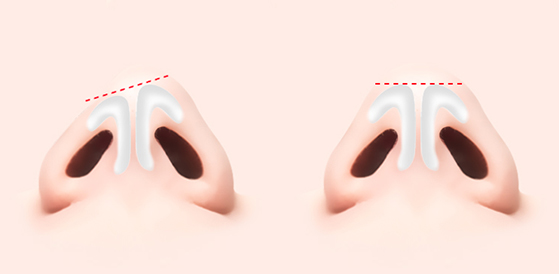
Osteotomy
When the nasal bone is crooked, the deviation can be corrected by cutting the bone.
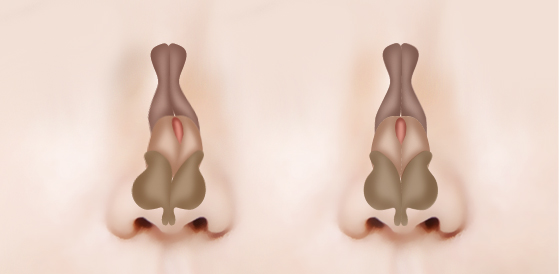
Deviated septum correction
When the septum is severely deviated, the septum can be corrected by cutting and removing part of the septum.
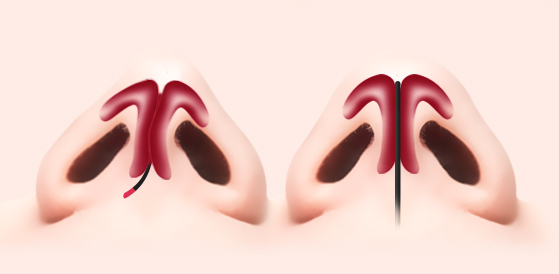
Strut graft
When the asymmetry is caused by a slanted columella, the slanted columella can be supported by inserting ear cartilage, a septal cartilage strut, or a silicone implant.
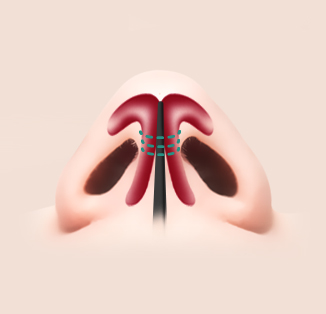
Inferior turbinate concha correction
When the inferior turbinate concha naturally blocks the airway or the mucosa around them is enlarged, the size of the turbinate bone can be reduced or the thickness of the mucosa can be reduced using high-frequency therapy.
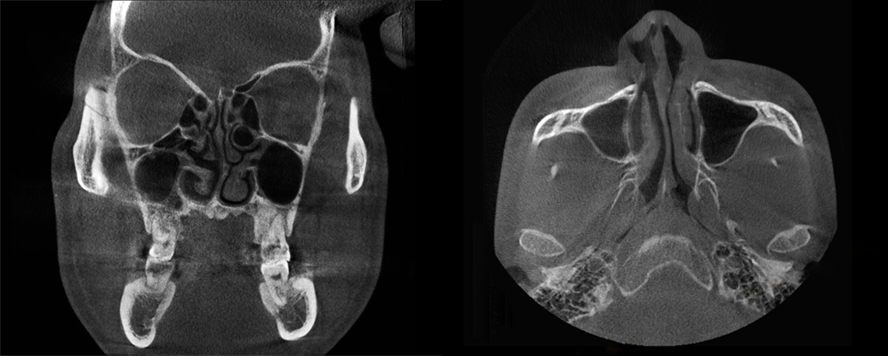
In-depth Examination

How does CDU perform ideal and precise surgery using the closed method?
By conducting an in-depth examination with a cutting-edge, three dimensional CT analysis, CDU surgeons precisely plan possible approaches for the best result by analyzing the nasal bone shape, bone thickness, and the condition of the soft tissues around the nose.
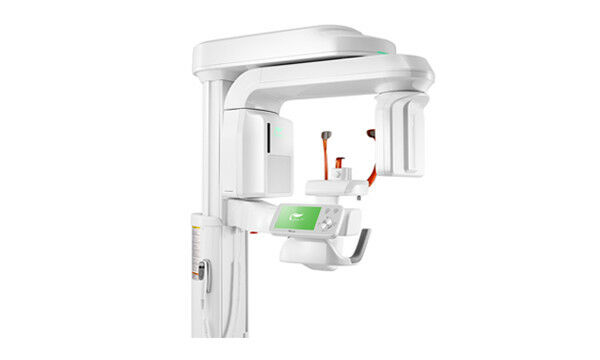
Blockage of the airway:
By checking the cause of functional issues, both aesthetic and functional satisfaction can be achieved!
Nose deviation and septum deviation:
By knowing how the nose is deviated internally and externally, not only the external deviation but also the internal deviation can be corrected, solving breathing issues.
Size of septal cartilage:
By knowing the precise size and condition of the septal cartilage, the surgery duration can be reduced and possible complications from harvesting septal cartilage can be minimized.
Size and shape of the nasal bone:
By analyzing the thickness and shape of the nasal bone, osteotomy or rasping the nasal bone may be performed simultaneously.
(*3D-CT scanning may be required depending on the surgeon’s diagnosis.)
Q&A about Deviated Nose Correction

The septum is a midline, thin wall that separates the right and left nasal cavity. It is mostly made of cartilage in the front and a thin plate of bone in the back, covered by a mucous membrane on both sides.
The majority of breathing issues improve with medical therapy such as allergy medication or nasal sprays. Furthermore, everyone’s septum naturally deviates, so not all deviated septums need to be corrected. However, if breathing issues negatively affect your normal life and don’t improve with medical treatment, you can consider undergoing surgery.
Yes, it is necessary. Nasal packing is commonly used for decreasing risks such as bleeding, swelling, hematomas, deviation, and adhesions. The packing needs to be maintained for at least seven days. On the seventh day after the operation, the packing is removed by the surgeon.
The majority of patients don’t undergo severe pain. It is manageable by taking pain medication such as Tylenol, or even nothing at all. Patients are more likely to experience difficulty breathing due to the packing than pain after surgery.
No, it doesn’t. Septoplasty itself doesn’t change the outer features on the face. If you want, septoplasty and external cosmetic procedures can be performed simultaneously and can change the shape of the nose.

